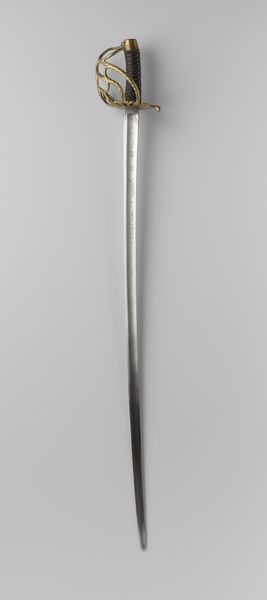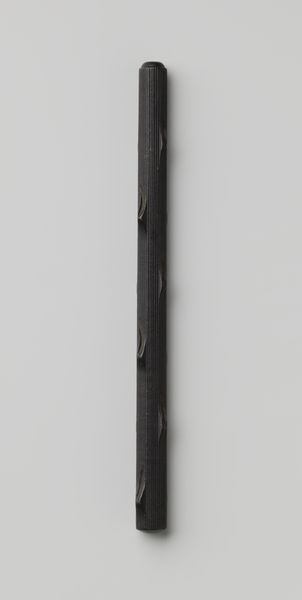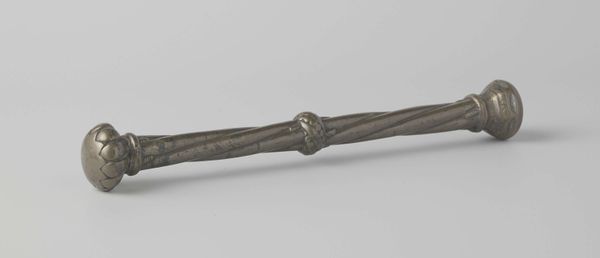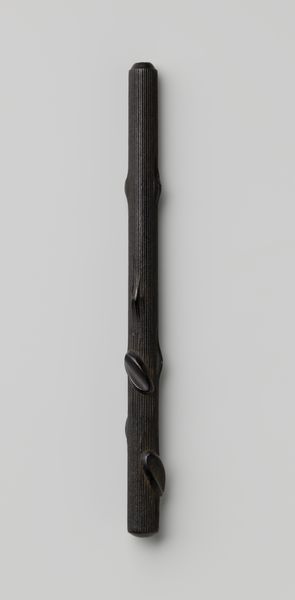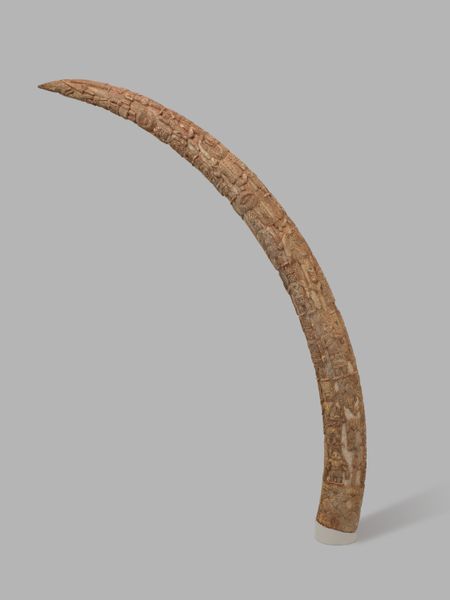
Onderstok van parasol of parapluie van een tropische houtsoort (amarant of bruinhart?) met gedeeltelijk opengewerkte en gedraaide stok waarop een bolle knop c. 1920 - 1940
0:00
0:00
gustavschnitzler
Rijksmuseum
carving, sculpture, wood
#
carving
#
sculpture
#
wood
#
decorative-art
Dimensions: circumference 12 cm, length 90 cm, length 41 cm, height 5.5 cm, width 100 cm, depth 16 cm
Copyright: Rijks Museum: Open Domain
Editor: Here we have a decorative piece, titled "Onderstok van parasol of parapluie van een tropische houtsoort (amarant of bruinhart?) met gedeeltelijk opengewerkte en gedraaide stok waarop een bolle knop," created sometime between 1920 and 1940. It appears to be a carved wooden handle, possibly for a parasol. The twist is really striking! What social implications can we gather from this artwork? Curator: That’s a very interesting initial point, indeed! The piece certainly holds an aesthetic appeal through the detailed carving. Considering the time period, however, it makes me question how decorative art like this might reflect the socio-economic structures of the time. Editor: What do you mean exactly? Curator: Think about it – who would have had the resources, the time, and the need for such an item? Given the colonial contexts of the early 20th century, luxurious tropical wood likely implies international trade dynamics rooted in inequality and colonial extraction of resources. Who gets the benefit from this decorative, elaborate design? Does the beautiful twisted shape somehow camouflage social power imbalances? Editor: That’s a perspective I hadn’t considered. The piece's elegance distracted me from its possible connection to broader issues of trade and inequality. It does prompt a new kind of investigation into what appear to be simply ornamental objects. Curator: Exactly. By interrogating the material origins, and imagining who would possess such an object and what values they assign to it, we can uncover fascinating insights into the historical moment it occupied. Editor: So, it's not just about aesthetics, but about understanding the complex layers of power and exchange embedded within seemingly simple design. Curator: Precisely! It’s about situating objects like this umbrella handle within broader narratives of gender, race, class, and politics, asking who benefitted and whose labor went unnoticed in its creation and consumption. Editor: It’s truly insightful to see how a seemingly decorative object opens up such a rich discussion about its role within these systems! I’ll remember to look deeper, not just at beauty, but at its wider context.
Comments
No comments
Be the first to comment and join the conversation on the ultimate creative platform.


